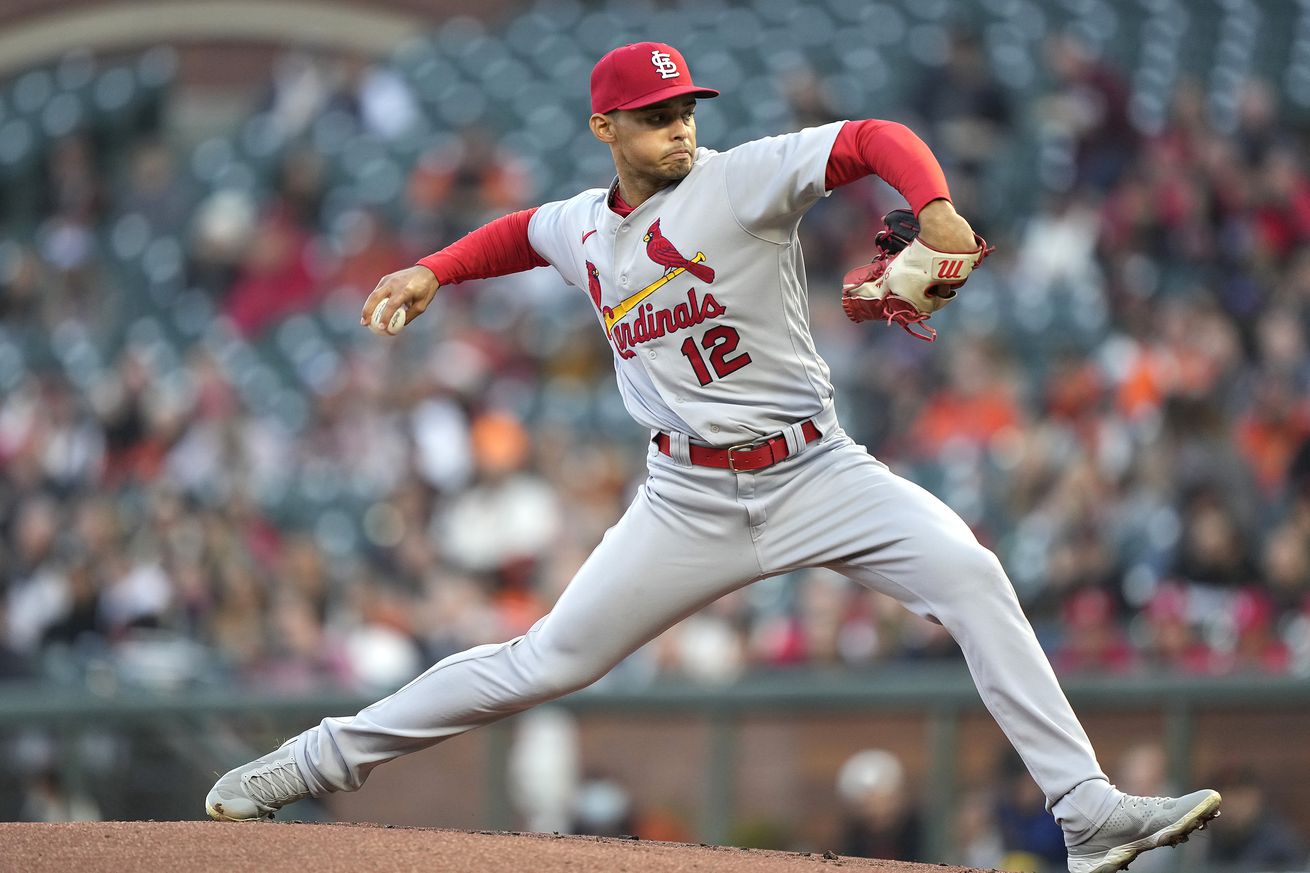
With starting pitchers becoming more of a commodity every year, teams are trying to get creative in finding ways to fill innings. The most common approach has been the opener strategy, but we’ve also seen teams converting relievers into starters. The Cardinals are in that boat with Jordan Hicks. With the injury to Jack Flaherty, St. Louis had a hole in the rotation. The Cardinals decided — rather than promoting someone or giving up assets to acquire outside help — they’d try to convert a relief ace to a starting ace. To this point, the Hicks experiment has been rocky and difficult to label, as he’s had a mixture of success and struggles. Trying to make Hicks a starter instead of keeping him as a reliever is a topic of debate. There are arguments for both sides, but is either one stronger than the other?
The case against Hicks being a started is relatively easy to make. On the surface, Hicks can be one of the best relievers in baseball when fully healthy. He was a good bullpen option in 2018, his age-21 season, when he logged 77 ⅔ innings across 73 games. He showed some flaws in his game that season: striking batters out at a 20.6 percent clip, walking batters at a 13.3 percent rate, and not missing many bats with a whiff percentage of 24.2. Despite those factors, Hicks still managed to post a 3.60 xERA to pair with an average exit velocity against of 88 MPH. Hicks built on this in 2019, when he appeared to be destined to breakout by posting a 28.2 percent strikeout rate, 10 percent walk rate, 30.2 whiff percentage, and an xERA of 2.41 in 28 ⅔ innings.
Unfortunately, the anticipated breakout of Hicks was halted when he tore his UCL in his throwing elbow and required Tommy John surgery. After his recovery, Hicks decided to opt out of the 2020 season due to COVID-19 concerns. Then, in 2021, Hicks’ elbow started to bark. Subsequently, after 10 appearances, Hicks was placed on the injured list with inflammation in his surgically repaired elbow, and this resulted in him not throwing another pitch for the Cardinals that season. His injury history in its own right is an argument against him becoming a starter.
Outside of his health, the biggest case against Hicks is his lack of a third pitch. He has two above-average offerings in his sinker and slider, but behind that, he has a changeup and four-seam fastball that he has used a combined 13 times this season as of May 6th. It is difficult for a pitcher of his age to go from having essentially no third pitch to developing one into at least an average offering that hitters have to respect throughout the game. There is an argument to be made that a third pitch is less important to possess, with starters not going as deep into games and the increasing rate in which starters only face the lineup two times through. However, in and of itself, it is relatively difficult to put together a list of starters around the league who only have two pitches that make up roughly 95% of their total pitches thrown.
The case for Hicks becoming a starter is very simple. If he can develop an average third pitch, and if he can stay healthy, he can become a frontline starting pitcher. Hicks has an elite one-two combo with his sinker — one of the fastest pitches in the league, with an average velocity of 98.6 MPH — and his slider that has elite movement with a vertical break of 42.4 inches and a horizontal break of 13.2 inches. He would likely drop his four-seam fastball if he was to become a starter full-time, as it is difficult for some pitchers to throw two types of fastballs with conviction. Hicks would likely need to develop a changeup or curveball to go with his slider/sinker combo, as it would be a pitch that can give him a bit more depth.
The next argument is among the 70 pitchers with the highest WAR from the 2021 season. Only eight of them had more relief appearances than starts, and this means, simply put: Hicks does not even have to become a team’s ace to be more valuable than just about every reliever in baseball. For reference point, Emannuel Clase, one of the better relievers in baseball, and Mike Minor, who is a low-end third or high-end fourth starter on a winning team, each amassed a 2.2 WAR in the 2021 season. Which then begs the question: Would it be easier for Hicks to pitch to or exceed the level of Minor, who had an xERA of 4.35 and an xFIP of 4.32 over 28 starts, or replicate Clase, who had a 2.17 xERA and a 2.60 xFIP in 71 total appearances?
There are very strong arguments for both sides. However, I lean on the side of him becoming a full-time reliever. Personally, I cannot envision him magically developing a third offering in his age-25 season, when he has previously shown nothing in that department. I also like the reduced workload on his arm due to his previous injury history. Expecting Hicks to become a reliever similar to Clase is a lot of pressure, as Clase is one of the best relievers in the game. Nonetheless, with his dominant two-pitch mix, Hicks establishing himself as one of the best relief pitchers in the game is certainly not out of the question.